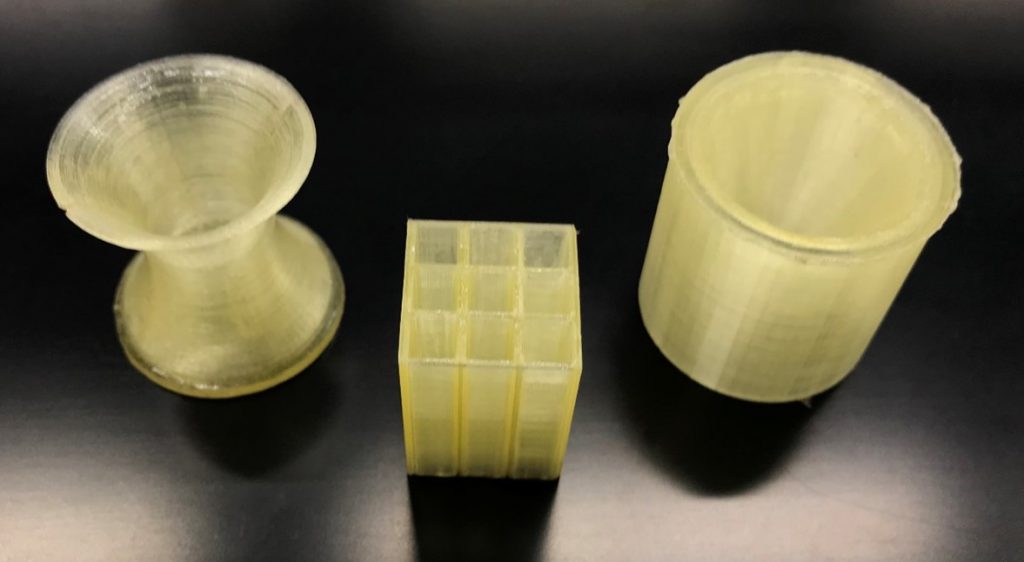3D Printed Dissolvable Molds for Scintillators
3D printed dissolvable molds allow for efficient net-shape production of complex detectors while eliminating risk of breakage during mold removal

Scintillators are widely used as detectors across many fields including medical diagnostics, high energy physics, and geophysical exploration. The market for scintillators calls for a variety of shapes and sizes to meet this diverse array of applications. For example, complex and thin detector shapes are required for multiple radiation detection applications but are difficult and/or expensive to produce. Existing scintillation detectors of all types (inorganic and organic materials) are produced using subtractive manufacturing methods that hinder the yield and increase the cost of producing specialized detector geometries.
Sandia researchers have developed a novel method to produce dissolvable molds for scintillators. They have demonstrated this method to address manufacturing limitations with Organic Glass Scintillators (OGS). OGS are well-suited for radiation detection applications due to their leading scintillation properties and thermoplastic physical characteristics. This new method allows for production using melt-casting methods that are compatible with mold-based fabrication strategies. Applying dissolvable molds for OGS enables the netshape production of complex detector shapes.
Using 3D printing technology, complex form shapes and sizes of molds are printed with commercial polyvinyl alcohol (PVA) filaments. These PVA 3D printed molds are then cast with scintillators. Subsequently, the molds are then dissolved completely in water to obtain the final free-standing designed scintillators. 3D printed, soluble PVA molds allows for the easy fabrication of intricate designs while eliminating the risk of breakage during de-molding. This novel process can be adjusted for specific scintillator applications, sizes, shapes, and materials. The advancement could have far-reaching benefits for scintillator fabrication for diverse applications and industries.
- Rapidly and cost-effectively customize scintillator form factor and performance capabilities to meet application specific requirements
- Eliminates geometric constraints or material strength limitations with net-shape production of specific radiation detector shapes
- Scintillator fabrication
- Homeland security
- Transportation security
- Medical scanners
- High-energy physics
- Scientific equipment, such as radiation or particle detectors

SD# 16048
Published11/16/2022